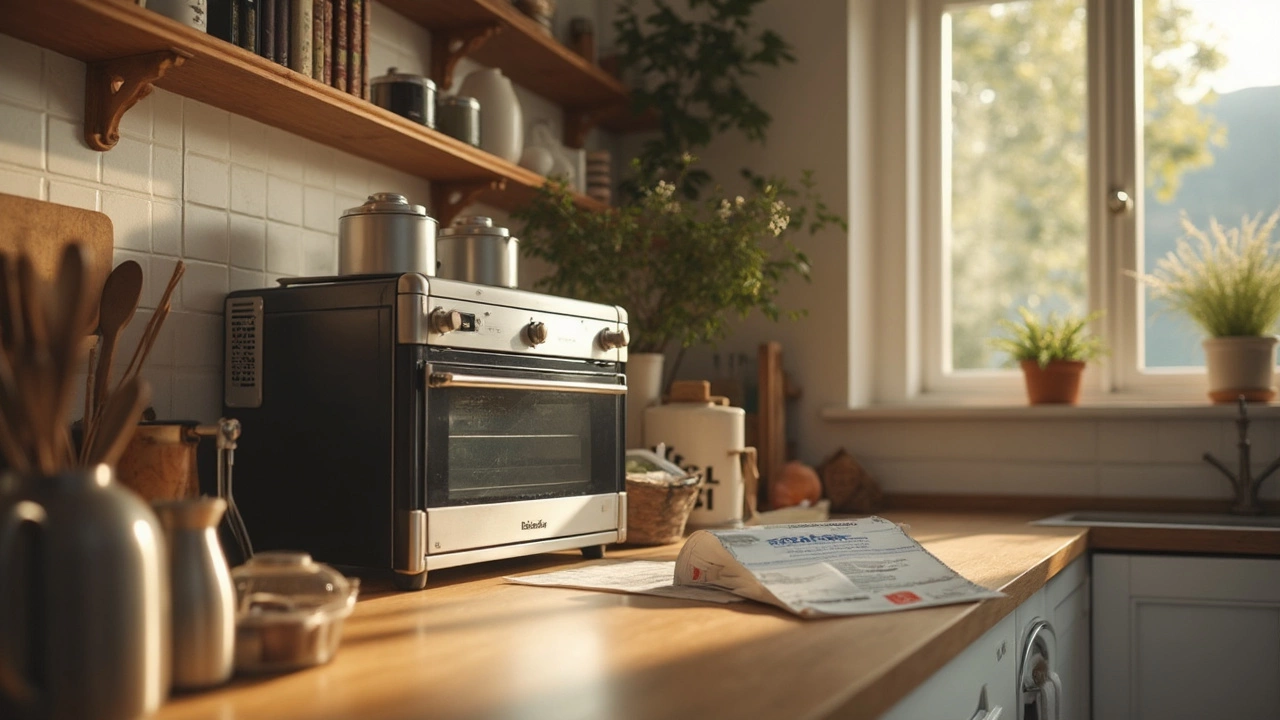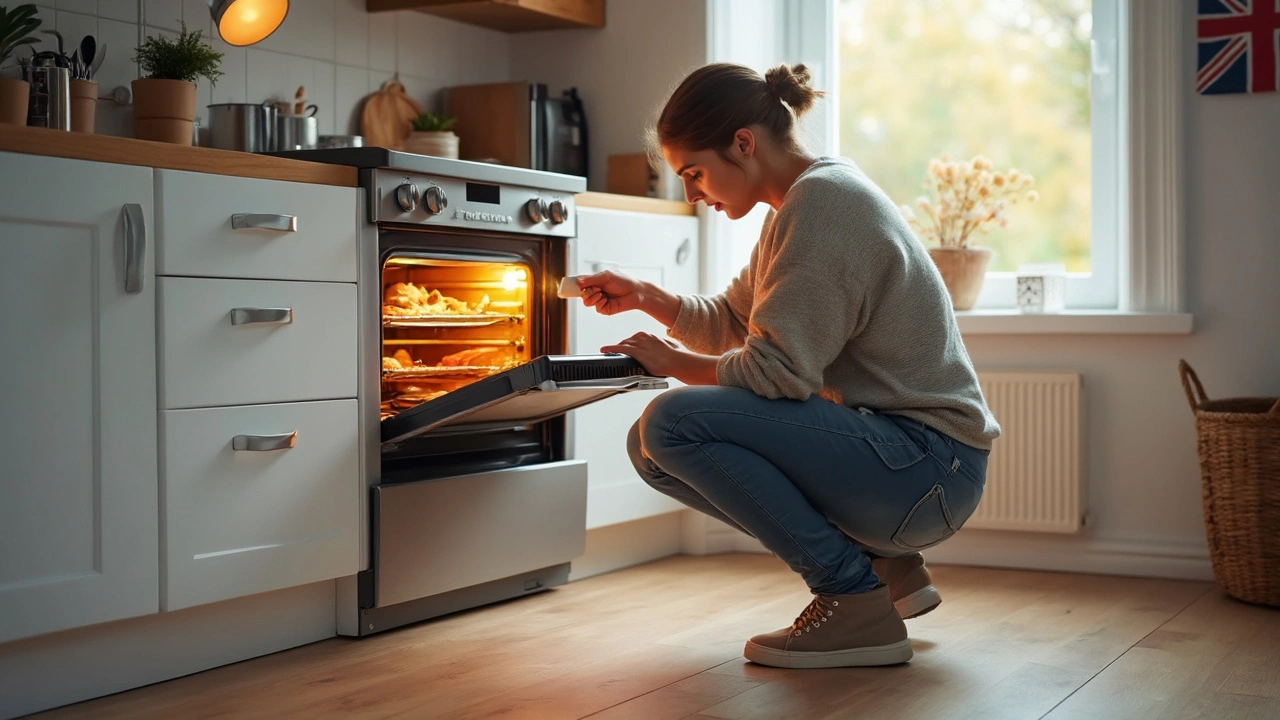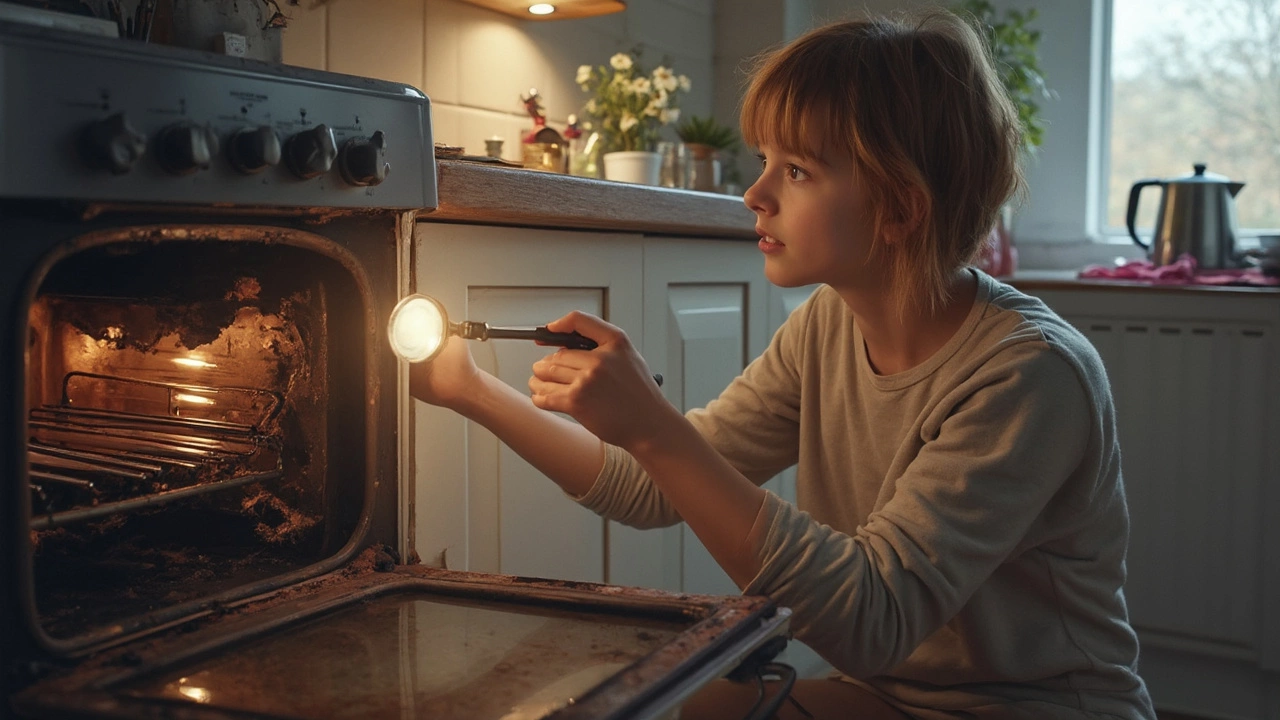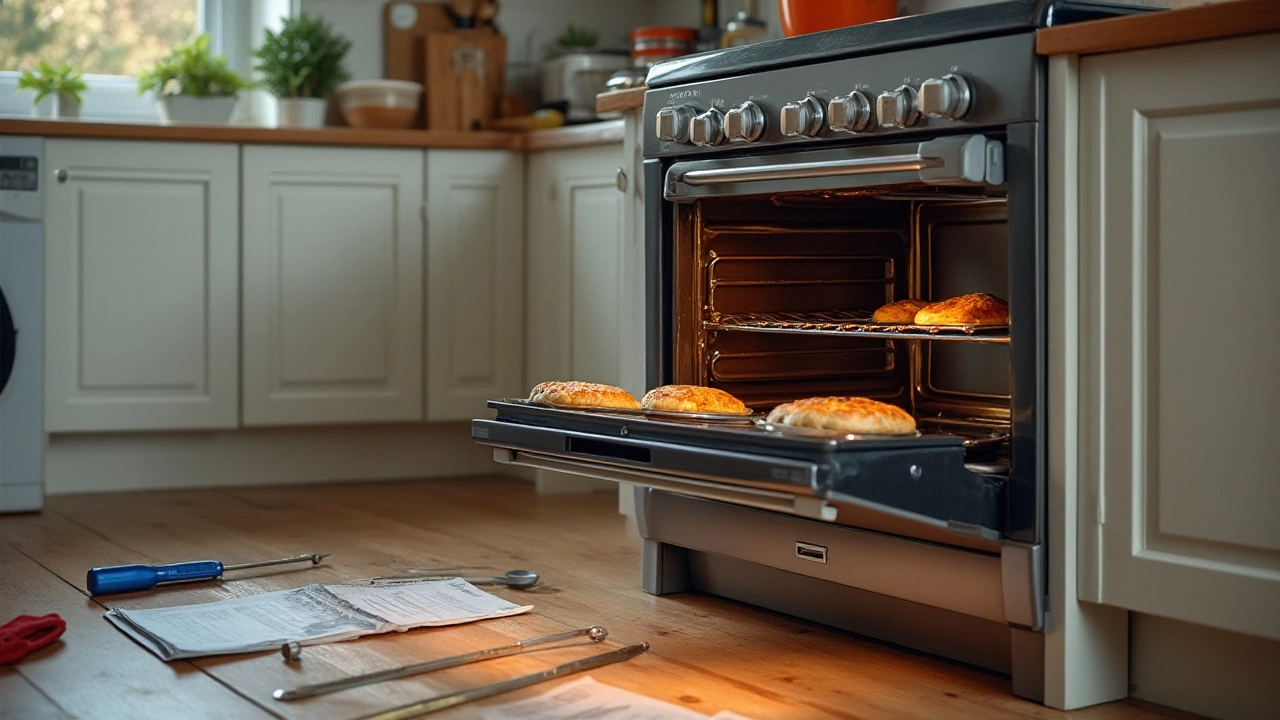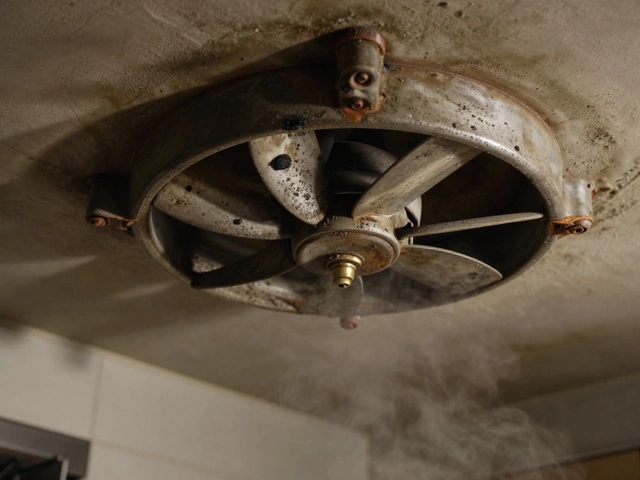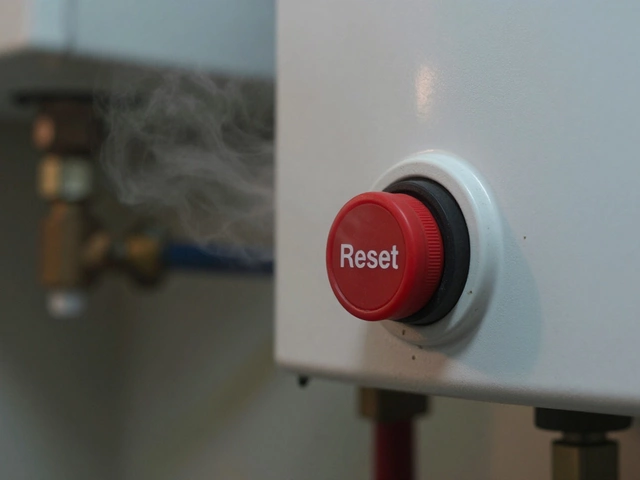Before you rush into installing your new electric oven, there's a bit more to it than simply plugging it in and hoping for the best. Ovens can be pretty power-hungry, and not all outlets are up to the task. You've got to make sure everything's compatible unless you want not just dinner plans but your kitchen electrics to go up in smoke.
First up, do a quick check of your new oven's power requirements. Is it asking for 120 volts or maybe 240? This matters because most household outlets are set for 120 volts, while many electric ovens require a tad more juice. No judgments, but plugging a big appliance into the wrong outlet can end with blown fuses or worse.
You'll want to give your home's wiring and circuit breakers a once-over too. Houses differ, and while some are already wired for big kitchen gadgets, others need an upgrade. Assess whether your circuit can handle the new load without tripping at the worst times. If you’re not sure about how circuits work or where to find yours, this might be a sign to call someone who does.
- Understanding Electrical Requirements
- Checking Your Home’s Compatibility
- Safety First: Why Professional Help Matters
- Avoiding Common Installation Mistakes
- Troubleshooting After Installation
Understanding Electrical Requirements
Alright, so you're eyeing that shiny new electric oven, but before you even think about firing it up, let's chat about what needs plugging where. Spoiler: not every oven plays nice with every outlet.
First, dive into your oven's manual (yeah, the one most of us ignore). You'll find the voltage needs lurking in there somewhere, and this matters a lot. Most heavy-duty ovens will crave 240 volts, but your regular power outlets are typically dishing out just 120 volts. That's not going to cut it for these power-hungry beasts.
Why is this a big deal? Plugging an appliance into an incompatible outlet not only means potential blown fuses but also serious fire hazards. In simple terms, it's like trying to suck a thick milkshake through a skinny straw. Just not gonna work.
Comparing Different Oven Requirements
To make things clearer, here's what you need to know about different ovens:
- Standard Electric Ovens: These usually need about 30-50 amps and 240 volts. They don't mess around with their power requirements.
- Convection Ovens: Often more efficient, but that doesn't mean they use less power. They're still sitting in that 240-volt club.
- Smaller Countertop Ovens: These might only draw 120 volts and can be plugged into a regular outlet. But double-check – not all are created equal.
Before you purchase, a pro tip is to peek behind your current oven if you can. What does it plug into? This might give you a clue as to what your kitchen is already set up for.
Where Your Home’s Wiring Comes In
Not all homes are the same. Some might have the necessary outlets and wiring already in place, especially if your kitchen's had recent upgrades. If not, it may mean investing in some electrical work to ensure your system matches your oven's juice needs.
If you're feeling out of your depth (and let's admit, wiring isn't everyone's jam), it might be time to consider bringing in a pro who can walk you through this without making your house into a live wire!
Checking Your Home’s Compatibility
Before you even think about installing a new electric oven, a crucial step is to confirm your home's electrical setup can handle it. Skimming past this could lead to a world of issues down the line.
Assess Your Outlet Type
Start by examining the outlet where you plan to connect your oven. Most large electric ovens need a 240-volt outlet instead of the typical 120-volt ones you find on your walls. If your outlet doesn’t match what your oven calls for, you’ll need to make some changes.
Circuit Breaker Capacity
Next, you’ve got to check if your circuit breaker can deal with the power demand. Most electric ovens require a dedicated circuit between 30 to 50 amps. Grab a flashlight and peek into your breaker box. Is there a dedicated breaker listed for the oven? If not, setting one up might be your next move.
Handy Tip
It's surprisingly common to accidentally overload circuits, which is not only frustrating but can also be dangerous. If you've got multiple high-power devices running off the same circuit, expect a few pops and sizzles. Yikes.
Professional Evaluation
Sometimes, it’s best to call in a pro. Electricians are the unsung heroes who can assess these factors in a flash, ensuring your home is ready and safe for your new installation. Plus, they can advise on other possible kitchen upgrades.
Common Compatibility Challenges
- Older homes lacking modern electrical standards.
- Insufficient amperage in the breaker.
- Incompatible outlet types.
- Shared circuits with other appliances.
Getting this right the first time can save you loads of hassle, some unexpected expenses, and potential safety hazards. So, double-check, triple-check, and maybe even get a second opinion to ensure your kitchen is set for that shiny new oven.
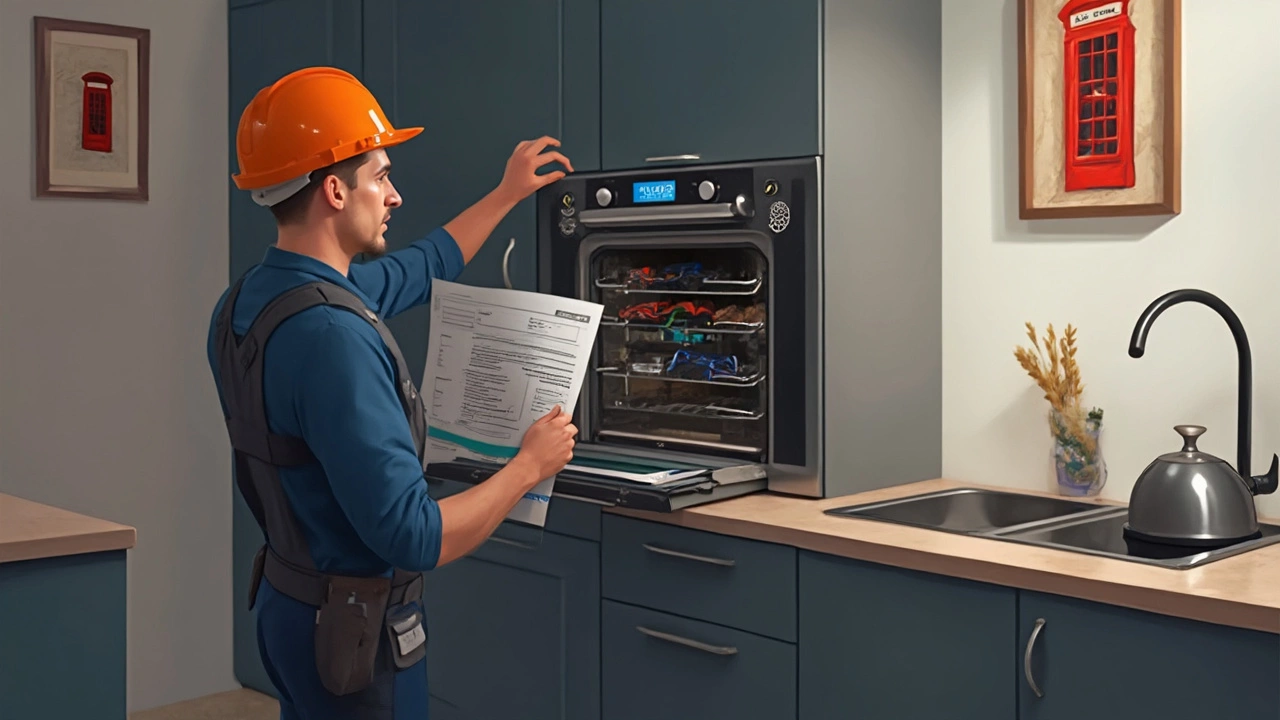
Safety First: Why Professional Help Matters
So, let's talk about why getting a pro to handle your electric oven installation isn't just some hyped-up cautionary tale. There are good reasons to call in someone who knows what they’re doing. You might feel confident tackling a repair or plug-it-in job, but when it comes to electric ovens, the stakes are a bit higher.
First off, pros are trained to spot issues you might miss, like outdated wiring or inadequate circuit breakers. These aren't 'nice-to-have' skills—they're crucial for preventing short circuits and even electrical fires. Remember, your oven requires more than standard outlets most of the time. An electrician can ensure everything’s wired correctly, which keeps your gadgets and your family safe.
"The most common mistake homeowners make is underestimating the power demands of modern appliances," says Sarah Johnson, a certified master electrician.
Consider this: if there's an issue later on, you'll be glad you hired someone who can quickly diagnose the problem. Experience counts, and a pro will likely do the job faster and more safely than a DIY attempt.
What Could Go Wrong?
Without professional help, you might face some unpleasant surprises. Here’s what you risk:
- Overloaded circuits leading to blown fuses.
- Miswiring that can cause the oven to malfunction.
- Potential fire hazards from incorrect installation.
Let’s say the oven looks plugged in, and everything seems fine. But then, one night, your pot roast could end up torching itself due to faulty wiring. Not the dinner party story you want!
Hiring a Pro: What to Expect
If you decide to hire someone, expect them to first verify your circuit's capacity and assess your electrical panel. They'll also make sure your new appliance is suitable for existing hookups or suggest upgrades if needed. Most pros follow a pretty standard checklist:
- Inspect existing wiring.
- Verify circuit amperage and suitability.
- Install the oven with correct grounding.
- Test the setup to ensure everything runs smoothly.
Getting a professional might seem like an extra step or expense, but consider it a no-brainer investment in your home's safety and your peace of mind. Trust me, you want the house standing as much as you want that fancy oven working!
Avoiding Common Installation Mistakes
Okay, you're psyched to get your new electric oven up and running, but let's not rush it. Mistakes here can lead to headaches—or worse, safety hazards. Here's a quick guide on what to avoid while getting your oven into the swing of things.
Overlooking the Power Requirements
One of the biggest slip-ups is ignoring the power needs of your electric oven. Like we said earlier, your oven might require a 240-volt outlet, and trying to force it on a 120-volt setup can trip breakers or cause overheating.
Ignoring Installation Instructions
The manual's not just for show. Each oven comes with its own set of installation specs. Skipping this step, or winging it with assumptions from previous models, might not cut it.
Skipping Grounding
Another common misstep is failing to ground the appliance properly. Grounding is crucial for preventing electrical shocks. Modern ovens usually come with a three-prong plug for this, but if your outlet's not equipped, consider getting an electrician to install a new one.
Improper Ventilation
Ventilation might not be on the top of your oven checklist, but it’s a biggie. Electric ovens need a way to vent heat safely to avoid overheating or cooking fires. Ensure there's enough room around the oven, especially if it's fit into a snug space.
Placement Errors
Make sure you’re placing the oven in an area that's both safe and convenient. Don't install it too close to walls or flammable materials. And always double-check that it sits level; an uneven oven might mean uneven baking—not anyone's idea of fun.
| Problem | What It Can Cause |
|---|---|
| Wrong Voltage | Blown Fuses |
| No Grounding | Electrical Shock Risk |
| Bad Ventilation | Overheating |
| Poor Placement | Fire Hazard |
Taking these precautions seriously can save you from a world of trouble. If you ever feel out of your depth, getting a professional on board isn’t a bad idea. It's all about keeping your home risk-free while you whip up those delectable dishes.
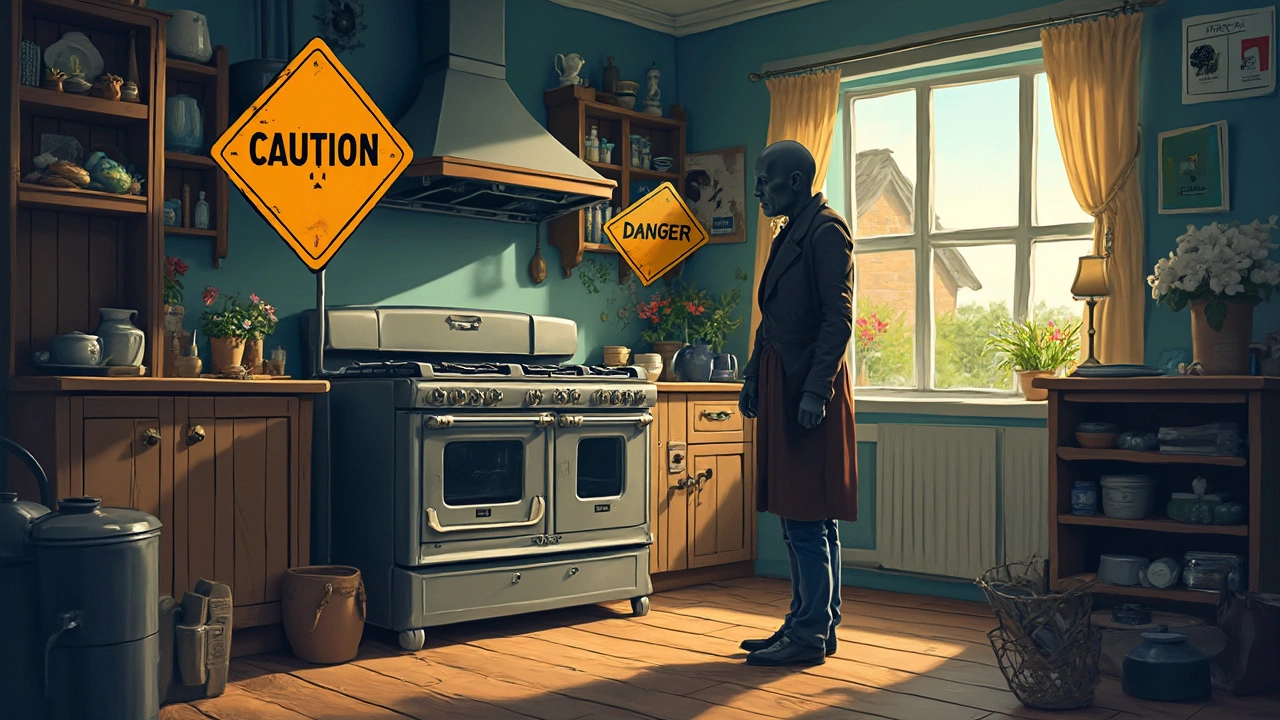
Troubleshooting After Installation
So, you've got your new electric oven all hooked up, but something seems off? No worries, troubleshooting can spot common issues.
When the Oven Won't Turn On
First, let's check if your oven is even getting power. No shame here—start simple! Inspect the breaker to see if it’s flipped due to overload. Electric ovens need a lot of power, and sometimes your existing setup might not cut it.
Steps to Fix the Issue:
- Make sure the oven’s plug is secure. Sometimes the plug looks connected, but it’s just not quite there.
- Check the breakers and reset them if necessary. Remember that sometimes it’s not just about flipping the switch; you might need to hold it for a few seconds.
- If this doesn’t work, consider if the outlet itself is faulty. Try another heavy-duty appliance in the same socket to test.
Oven Heats Unevenly or Not at All
The disappointment of uneven cooking can turn any dinner plan into a shaky affair. If your oven isn't heating up evenly, check the calibration settings. New electric ovens might need a quick adjustment to get the temperature settings right.
- Consult the user manual to see how to recalibrate your model. Each brand can differ a bit in how they handle this.
- Ensure that the oven racks are correctly positioned. Off-balance racks can cause uneven cooking.
Unusual Noises
If your oven's barking, you needn't worry it's haunted. Newer models might have cooling fans that run a bit loudly. Still, if it sounds like metal on metal or a pretty harsh grinding, it might be a signal to call in a technician.
Display or Control Problems
Sometimes the touchscreens or control panels freeze up faster than your favorite ice cream. Before you freak, try doing a full reset—most models have a mini reboot function to iron out the bugs.
Reset Instructions:
- Turn off the power to the oven at the breaker for a few minutes.
- Switch it back on and see if the controls respond better.
If you've tackled these bits and the electric oven still gives you grief, you might have to call in reinforcements from a pro. Assuring everything is safe and sound is well worth it.
